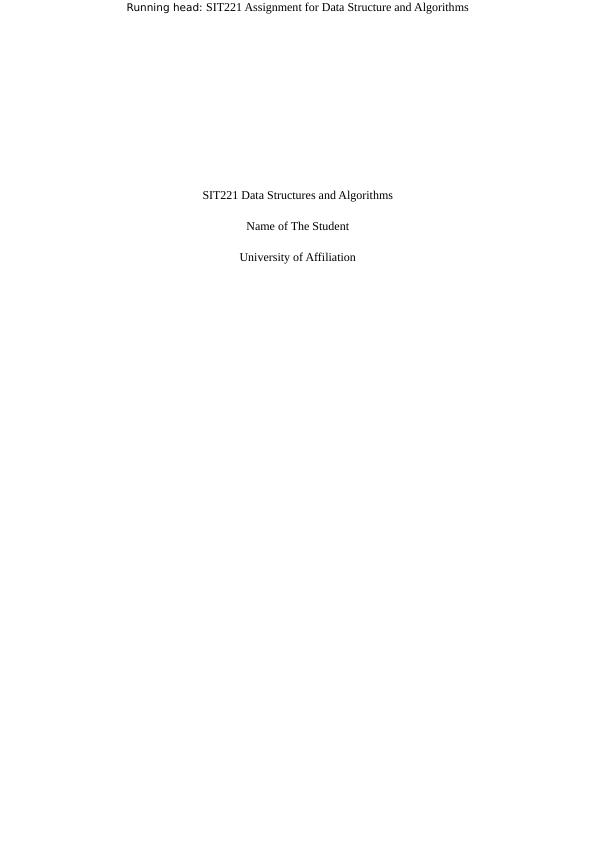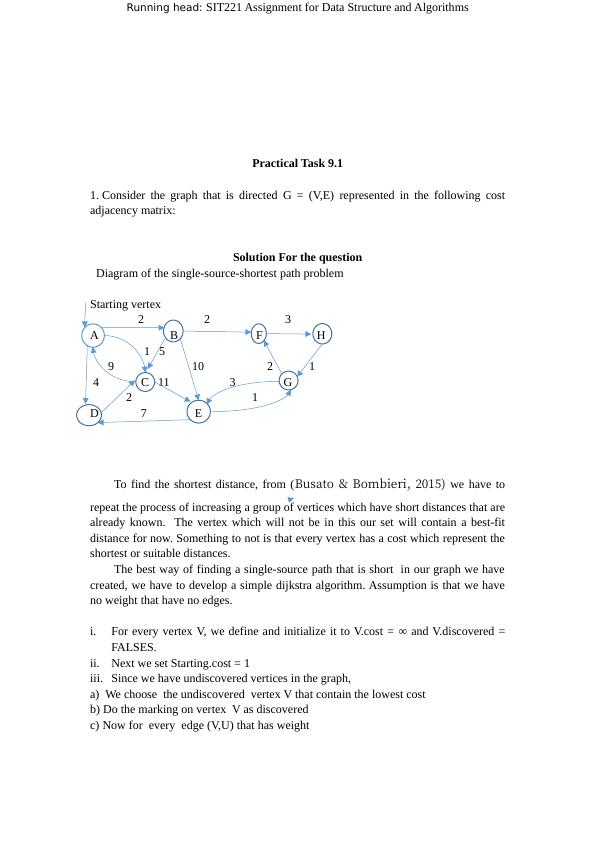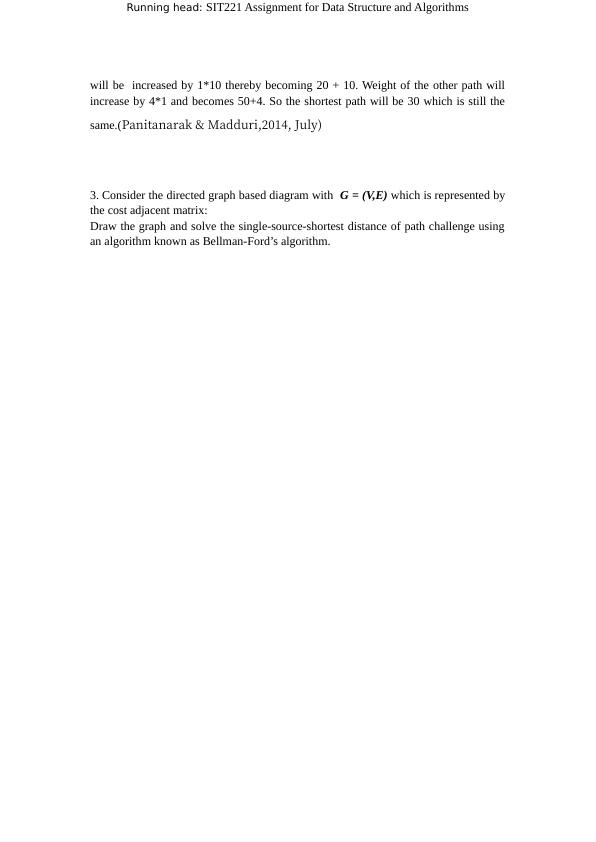SIT221 Assignment for Data Structure and Algorithms.
Conduct research on minimum spanning tree problem and solve a numeric example using Prim-Jarnik's algorithm.
19 Pages2400 Words1 Views
Added on 2022-11-13
SIT221 Assignment for Data Structure and Algorithms.
Conduct research on minimum spanning tree problem and solve a numeric example using Prim-Jarnik's algorithm.
Added on 2022-11-13
ShareRelated Documents
End of preview
Want to access all the pages? Upload your documents or become a member.
Bellman-Ford and Kruskal’s algorithm
|3
|692
|19
Discrete Mathematics
|7
|962
|209
Assignment on Discrete Mathematics
|8
|653
|457
Assignment | An edge-weighted digraph is a digraph where we associate weights
|7
|1444
|18
Desklib - Online Library for Study Material
|4
|681
|46
Discrete Mathematics Assignment
|6
|495
|371




